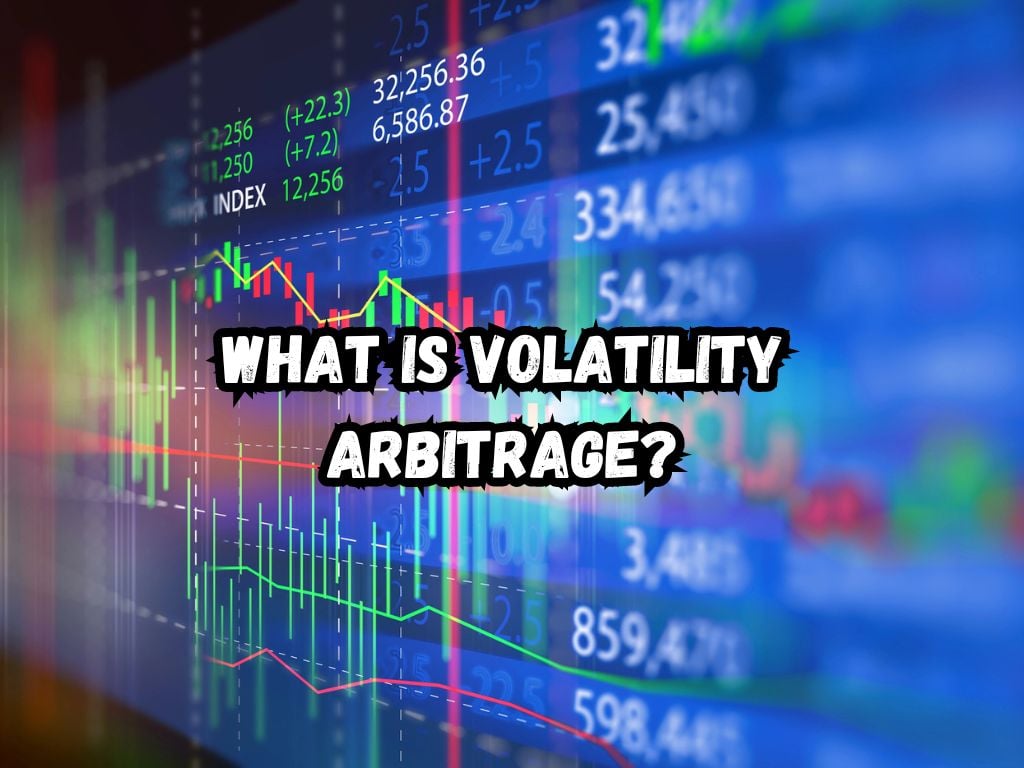In the world of finance, volatility represents the degree of variation of a trading price series over time. This concept is central to many trading strategies, one of which is volatility arbitrage.
This strategy capitalizes on the difference between the market’s forecast of future volatility and the implied volatility of options based on that asset.
It’s a sophisticated approach that requires a deep understanding of market mechanics.
This article aims to shed light on the intricacies of volatility arbitrage, guiding both seasoned and aspiring traders through its fundamentals, operation, risks, rewards, and practical considerations.
The Basics of Volatility Arbitrage
What is Volatility?
Volatility signifies the rate at which the price of an asset increases or decreases for a set period.
It’s a critical measure for investors, as it helps evaluate the risk associated with a particular asset.
Volatility can be of two types: historical, which looks at past market changes, and implied, which is a projection of future fluctuations embedded in option prices.

Understanding Arbitrage
Arbitrage involves buying and selling an asset or security across different markets or forms to capitalize on differing prices for the same asset.
It’s a strategy aiming at risk-free profit, though true risk-free opportunities are rare.
What Is Volatility Arbitrage?
Volatility arbitrage takes this strategy a notch higher. It looks at the difference between the implied volatility of options (their price-based forecast of future volatility) and the actual volatility expected in the market.
The approach is based on the premise that if the implied volatility is higher than the forecasted volatility, the option is overpriced—and conversely, if it’s lower, the option is underpriced.
How Does Volatility Arbitrage Work?
The Role of Options in Volatility Arbitrage
Options play a central role in volatility arbitrage. They offer the right, but not the obligation, to buy (call) or sell (put) an asset at a set price within a specific period. Their pricing models, like the Black-Scholes model, heavily factor in volatility.
By analyzing discrepancies between model-implied volatility and market-expected volatility, traders can identify arbitrage opportunities.
Identifying Opportunities
Successful volatility arbitrage hinges on accurately identifying mismatches between implied and actual expected volatilities.
This involves a deep dive into market analytics, employing tools and models to forecast volatility, and then comparing these forecasts with current options pricing.
Executing Volatility Arbitrage Strategies
Traders execute this strategy by setting up positions that profit from the eventual correction of the implied volatility to mirror the actual market expectations.
Techniques like delta-neutral strategies, which involve setting up a portfolio that is insensitive to small price movements, and gamma scalping, targeting profits off the price changes of an underlying asset, are commonly used.
Risks and Rewards
Potential Returns
Volatility arbitrage can be profitable. It draws on sophisticated models and deep market insights to identify mispricings before they correct.
The extent of profitability largely depends on the accuracy of the trader’s volatility forecasts and the speed at which they can act on these insights.
Associated Risks
Like all trading strategies, volatility arbitrage comes with its set of risks. Market conditions can change. The assumptions underlying volatility forecasts may prove incorrect.
Moreover, the limitations of options pricing models may lead to inaccurate signals, and there’s always a risk in the execution timing, costs, and potential slippage.
Key Considerations for Traders
Market Analysis
A successful trader keeps a close eye on market sentiment and macroeconomic factors that could affect volatility. This constant vigilance helps in making informed decisions.
Technical Tools and Indicators
Traders employ various technical tools, like Bollinger Bands and the Average True Range (ATR), to assess market volatility.
These tools help in visualizing price movements and volatility, aiding in the identification of trading opportunities.
Building a Volatility Arbitrage Portfolio
Diversification is key to managing the inherent risks. By spreading investments across different assets, traders can mitigate the impact of a poor performance in any single investment.
Employing stop-loss orders and regularly rebalancing the portfolio are also prudent practices.

Regulatory and Ethical Considerations
The regulatory landscape around arbitrage activities is intricate. Traders must navigate these legalities carefully to avoid sanctions.
Ethically, while seeking profit, it’s important to consider the broader impact of trading activities on market stability and integrity.
Pro Tips
For those looking to dive into volatility arbitrage, staying updated with market news and events is crucial.
Practicing with simulations or paper trading can provide valuable experience without the financial risk.
Moreover, the world of trading is ever-evolving; continuous learning and adaptation are essential for long-term success.
Frequently Asked Questions
What makes volatility arbitrage different from other types of arbitrage trading?
Its focus on exploiting the difference between implied and expected market volatility sets it apart.
How do major market events affect volatility arbitrage strategies?
Such events can cause sudden spikes in volatility, potentially creating more arbitrage opportunities, but also more risk.
Can individual investors profit from volatility arbitrage, or is it mainly for institutional traders?
While predominantly a domain of institutional traders due to its complexity, knowledgeable individual investors can also profit from it.
What are the common pitfalls beginners should avoid in volatility arbitrage?
Overreliance on imperfect models, underestimating the speed at which markets can change, and neglecting risk management practices are common pitfalls.
How has the rise of algorithmic trading impacted the viability of volatility arbitrage?
Algorithmic trading has made markets more efficient, potentially reducing arbitrage opportunities but also allowing for faster identification and execution of trades.
Conclusion
Volatility arbitrage is a complex yet potentially rewarding strategy. It requires an intricate understanding of market dynamics, a keen eye for detail, and a sophisticated approach to trading.
As with any financial endeavor, it comes with risks, but by staying informed, practicing diligently, and navigating the markets wisely, traders can explore this strategy’s benefits.
By providing a comprehensive view of volatility arbitrage, this guide aims to equip traders with the knowledge they need to navigate this strategy’s complexities.
Whether a seasoned trader or an enthusiastic beginner, understanding the ins and outs of volatility arbitrage is a step toward mastering the financial markets.


 Tags:
Tags:










